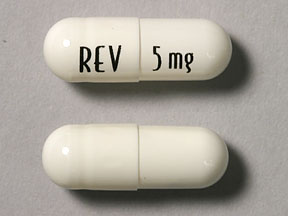
Recently Diagnosed or Relapsed? Stop Looking For a Miracle Cure, and Use Evidence-Based Therapies To Enhance Your Treatment and Prolong Your Remission
Multiple Myeloma an incurable disease, but I have spent the last 25 years in remission using a blend of conventional oncology and evidence-based nutrition, supplementation, and lifestyle therapies from peer-reviewed studies that your oncologist probably hasn't told you about.
Click the orange button to the right to learn more about what you can start doing today.
- You are here:
- Home »
- Blog »
- Multiple Myeloma »
- No Maintenance if MRD Neg?
No Maintenance if MRD Neg?

When I ask “No Maintenance if MRD neg?” I am asking if newly diagnosed MM patients who reach MRD neg. status NOT undergo low-dose maintenance therapy?
To put this another way, the MM patient who reaches MRD negative status may not benefit from more chemo. And more chemo at this point may cause harm.
MRD stands for “minimal residual disease.” MRD negative 10 to the 6th means that you analyze one million normal cells and don’t find any myeloma cells. 10 to the 5th means that you analyze one hundred thousand normal cells and you don’t find any myeloma cells.
One of the challenges pointed out in the MASTER study linked below is that high risk MM patients may not enjoy the same length of PFS or OS even if they reach MRD neg. status as average MM patients do.
At this point during this blog post, I need to go on record saying that the studies linked below do not promise results. Clinical trials can identify groups of MM patients acting in a certain way. But these studies are about increasing or decreasing risk.
Not all newly diagnosed MM patients will reach MRD, sCR or CR status. If you do not reach MRD, sCR or CR status it does not mean that you cannot achieve a long PFS or OS. The MASTER study is simply focusing on induction therapy with a quadruplet chemotherapy (daratumumab, carfilzomib, lenalidomide, and dexamethasone- Dara-KRd) and testing this quad theories relationship with those patients who reach MRD status.
It you don’t reach MRD status it’s easy to think you have failed somehow. This is not the case.
Possible Side Effects caused by low-dose Revlimid Maintenance Chemotherapy
I am a myeloma survivor myself. Not only did I not reach MRD status post induction, I relapsed about a year after my ASCT. That was back in 1995. Consider evidence-based non-conventional theories.
My point is that there is more than one way to skin a cat with multiple myeloma. Have you been diagnosed with multiple myeloma? Let me know- David.PeopleBeatingCancer@me.com
thank you,
David Emerson
- MM Survivor
- MM Cancer Coach
- Director PeopleBeatingCancer
Time to Stop Routine Maintenance Therapy in Myeloma?
“”Maintenance therapy is big business,” warned Benjamin Derman, MD, assistant professor of medicine at the University of Chicago. He was commenting on the financial implications of new data suggesting that physicians may need to rethink maintenance with lenalidomide (Revlimid and generics) for multiple myeloma (MM)…
For more than 10 years, ongoing treatment with lenalidomide following autologous hematopoietic stem cell transplantation (ASCT) has been the unchallenged gold standard…
The new findings were from the MASTER study, published in The Lancet Haematology, along with an invited commentary by Dr. Derman. In MASTER, patients who showed no evidence of disease after transplantation and two phases of consolidation therapy had the opportunity to avoid lenalidomide maintenance…
In the lenalidomide-free group, just 9% of patients without high-risk chromosome abnormalities or just one HRCA progressed within 2 years. About 47% of patients with two or more HRCAs progressed within 2 years…
- “Quality of life,
- the financial cost,
- and the toxicity
are three main reasons why we would like to discontinue the maintenance or give maintenance only for the amount of time that a patient needs it…”
However, the MASTER trial made use of a different measure: MRD negativity, in which myeloma cells can no longer be detected in bone-marrow aspirate at a level of 1 in 100,000 (10–5) or, in some studies, 1 in 1 million (10–6)…
In 2020 a team headed by Nikhil Munshi, MD, professor of medicine at Harvard Medical School, Boston, published a large meta-analysis showing that a negative MRD in a patient with MM was significantly prognostic for both progression-free survival and overall survival…
Dr. Derman said: “I personally think that the data is already there… [MASTER] shows that perhaps this notion of indefinite maintenance therapy is one that really has to go by the wayside… patients should have the option to consider with their physician [the chance to] potentially discontinue treatment.”
For 15 years, relentless lenalidomide maintenance has “quite rightly been the strongest pillar of therapy”, said Dr. Costa. “But for patients, this is not something that they easily embrace – it’s not ideal that you are going to have to take therapy for the rest of your life.””
Minimal residual disease response-adapted therapy in newly diagnosed multiple myeloma (MASTER): final report of the multicentre, single-arm, phase 2 trial
“For patients with newly diagnosed multiple myeloma, reaching minimal residual disease (MRD) negativity after treatment is associated with improved outcomes; however, the use of MRD to modulate therapy remains elusive. We present the final analysis of the MASTER trial of daratumumab, carfilzomib, lenalidomide, and dexamethasone (Dara-KRd) therapy in patients with newly diagnosed multiple myeloma, in which MRD status is used to modulate treatment duration and cessation…
Interpretation


